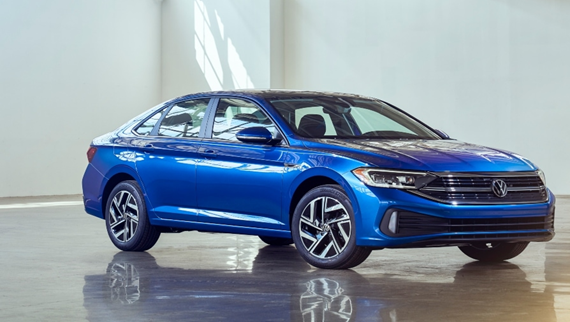Hybrid Hype: Unveiling the Benefits of Electric-Gasoline Synergy
**Hybrid Hype: Bridging the Gap Between Electric and Gasoline Vehicles**
In the automotive landscape, the quest for sustainable and efficient transportation has led to the emergence of hybrid vehicles, seamlessly blending the advantages of electric and gasoline powertrains. Hybrids have garnered significant attention for their ability to reduce emissions, enhance fuel economy, and provide a smoother driving experience.
The core concept behind hybrid technology lies in the integration of an electric motor and a gasoline engine. This combination allows the vehicle to operate in various modes, including electric-only, gasoline-only, and a combination of both. During acceleration or low-speed driving, the electric motor provides instant torque, reducing the reliance on the gasoline engine and minimizing fuel consumption.
Furthermore, regenerative braking systems in hybrids capture energy that would otherwise be lost during deceleration and store it in the battery, further enhancing efficiency. This energy can then be utilized to power the electric motor, reducing the need for gasoline.
Hybrids offer a significant advantage over conventional gasoline vehicles in terms of fuel economy. By utilizing the electric motor, hybrids can achieve higher miles per gallon, especially in urban driving conditions where frequent stops and starts are common. This translates into substantial savings on fuel costs over time.
In addition to fuel efficiency, hybrids also contribute to reducing emissions. By operating in electric-only mode, hybrids eliminate tailpipe emissions, resulting in cleaner air and a reduced carbon footprint. Moreover, the gasoline engine in hybrids is typically smaller and more efficient than in conventional vehicles, further reducing emissions.
However, it’s important to note that hybrids are not fully electric vehicles. They still rely on gasoline to power the engine, albeit to a lesser extent. This means that hybrids cannot achieve the zero-emission capabilities of pure electric vehicles.
Despite this limitation, hybrids represent a significant step towards sustainable transportation. They offer a practical solution for consumers who are not yet ready to fully embrace electric vehicles but still desire the benefits of reduced emissions and improved fuel economy.
As technology continues to advance, the gap between electric and gasoline vehicles is narrowing. Hybrids serve as a bridge, providing a gradual transition towards a more sustainable automotive future. By combining the advantages of both powertrains, hybrids offer a compelling option for consumers seeking a balance between efficiency, performance, and environmental consciousness.
Bridging the Gap: Exploring the Role of Hybrids in the Transition to Electric Mobility
**Hybrid Hype: Bridging the Gap Between Electric and Gasoline Vehicles**
In the pursuit of sustainable transportation, hybrid vehicles have emerged as a promising bridge between electric and gasoline-powered cars. By combining an internal combustion engine with an electric motor, hybrids offer a blend of efficiency and practicality that appeals to a wide range of drivers.
Hybrids operate on a principle of regenerative braking, where energy lost during deceleration is captured and stored in a battery. This stored energy can then be used to power the electric motor, reducing the reliance on gasoline and improving fuel economy. Some hybrids, known as plug-in hybrids, can even be plugged into an external power source to charge the battery, extending their electric-only range.
The benefits of hybrids are undeniable. They offer significantly better fuel efficiency than gasoline-powered vehicles, reducing both operating costs and environmental impact. Additionally, hybrids produce fewer emissions, contributing to cleaner air and a healthier planet.
However, hybrids are not without their drawbacks. They tend to be more expensive than gasoline-powered vehicles, and their batteries have a limited lifespan. Furthermore, the electric-only range of plug-in hybrids is often limited, making them less suitable for long-distance travel.
Despite these limitations, hybrids remain a valuable stepping stone in the transition to electric mobility. They provide a practical and affordable way for drivers to reduce their carbon footprint while still enjoying the convenience of a gasoline-powered vehicle.
As battery technology continues to improve and electric vehicles become more affordable, hybrids may eventually be phased out. However, for the time being, they play a crucial role in bridging the gap between the old and the new, paving the way for a more sustainable transportation future.
In conclusion, hybrid vehicles offer a compelling solution for drivers seeking to balance efficiency, practicality, and environmental consciousness. While they may not be the ultimate solution, they represent a significant step forward in the transition to electric mobility, helping to reduce emissions and promote a cleaner, greener future.
The Future of Transportation: Hybrids as a Stepping Stone to Sustainable Driving
**Hybrid Hype: Bridging the Gap Between Electric and Gasoline Vehicles**
In the realm of sustainable transportation, hybrid vehicles have emerged as a promising bridge between the limitations of gasoline-powered cars and the aspirations of electric vehicles. By seamlessly blending the efficiency of electric motors with the practicality of internal combustion engines, hybrids offer a compelling solution for drivers seeking a balance between environmental consciousness and affordability.
The allure of hybrids lies in their ability to reduce fuel consumption and emissions without sacrificing the convenience and range of gasoline vehicles. Electric motors assist the engine during acceleration and provide power at low speeds, significantly improving fuel economy. Moreover, regenerative braking systems capture energy that would otherwise be lost during deceleration, further enhancing efficiency.
However, hybrids are not without their drawbacks. Their batteries add weight and cost to the vehicle, and their range is limited by the size of the battery pack. Additionally, the complexity of their powertrains can increase maintenance costs compared to conventional gasoline vehicles.
Despite these limitations, hybrids remain a viable option for drivers who are not yet ready to fully embrace electric vehicles. They offer a gradual transition to sustainable driving, allowing drivers to experience the benefits of electrification while mitigating range anxiety and infrastructure concerns.
As battery technology continues to advance, the gap between hybrids and electric vehicles is narrowing. Plug-in hybrid electric vehicles (PHEVs) combine the advantages of hybrids with the ability to recharge the battery externally, extending their electric range and reducing reliance on gasoline.
Furthermore, the development of solid-state batteries promises to revolutionize the electric vehicle industry. These batteries are lighter, more compact, and have a longer lifespan than traditional lithium-ion batteries, potentially enabling hybrids and electric vehicles to achieve even greater efficiency and range.
In conclusion, hybrid vehicles play a crucial role in the transition to sustainable transportation. They bridge the gap between gasoline and electric vehicles, offering a practical and affordable solution for drivers seeking to reduce their environmental impact without compromising convenience. As battery technology continues to evolve, hybrids will continue to evolve, paving the way for a future where electric vehicles become the norm.








